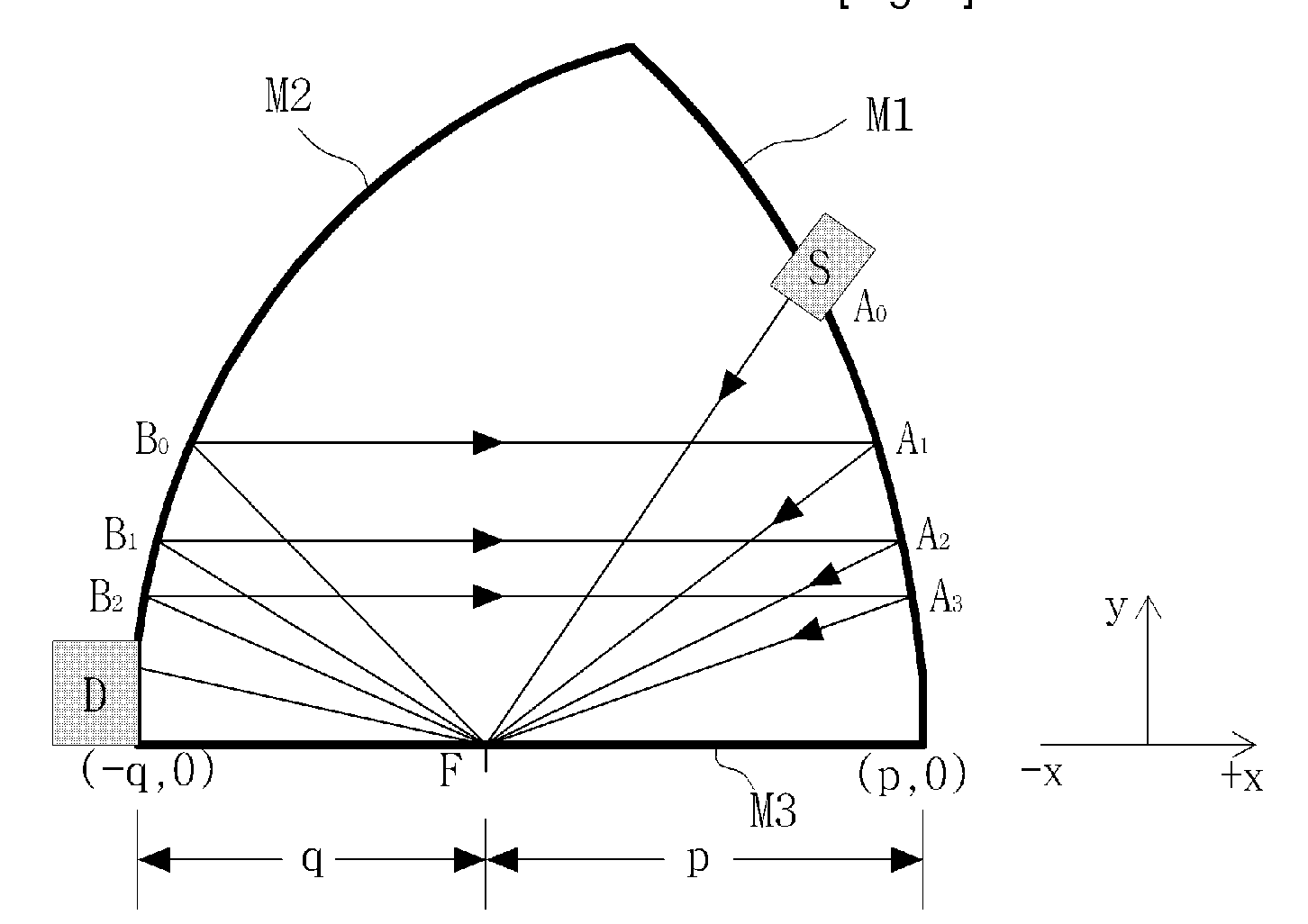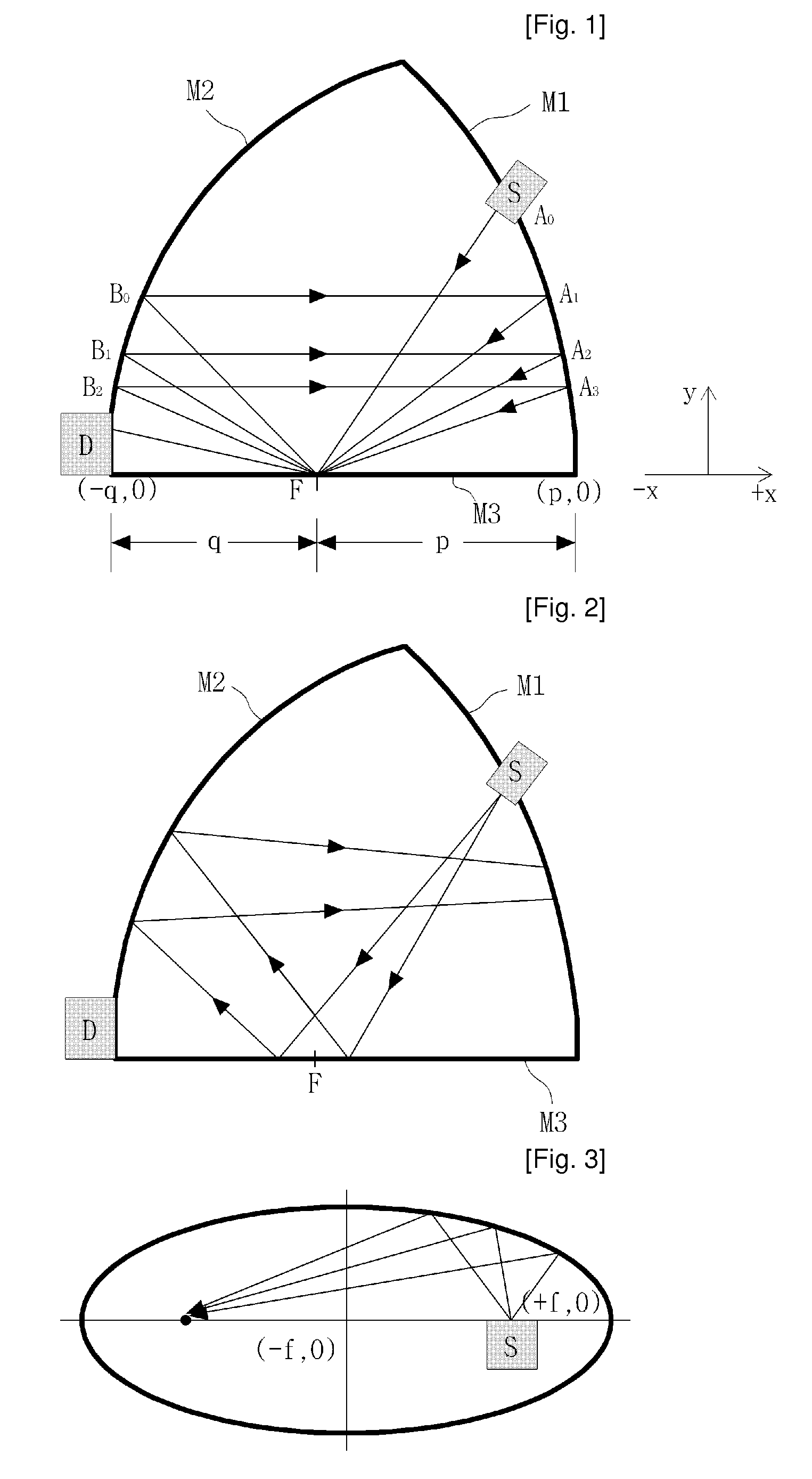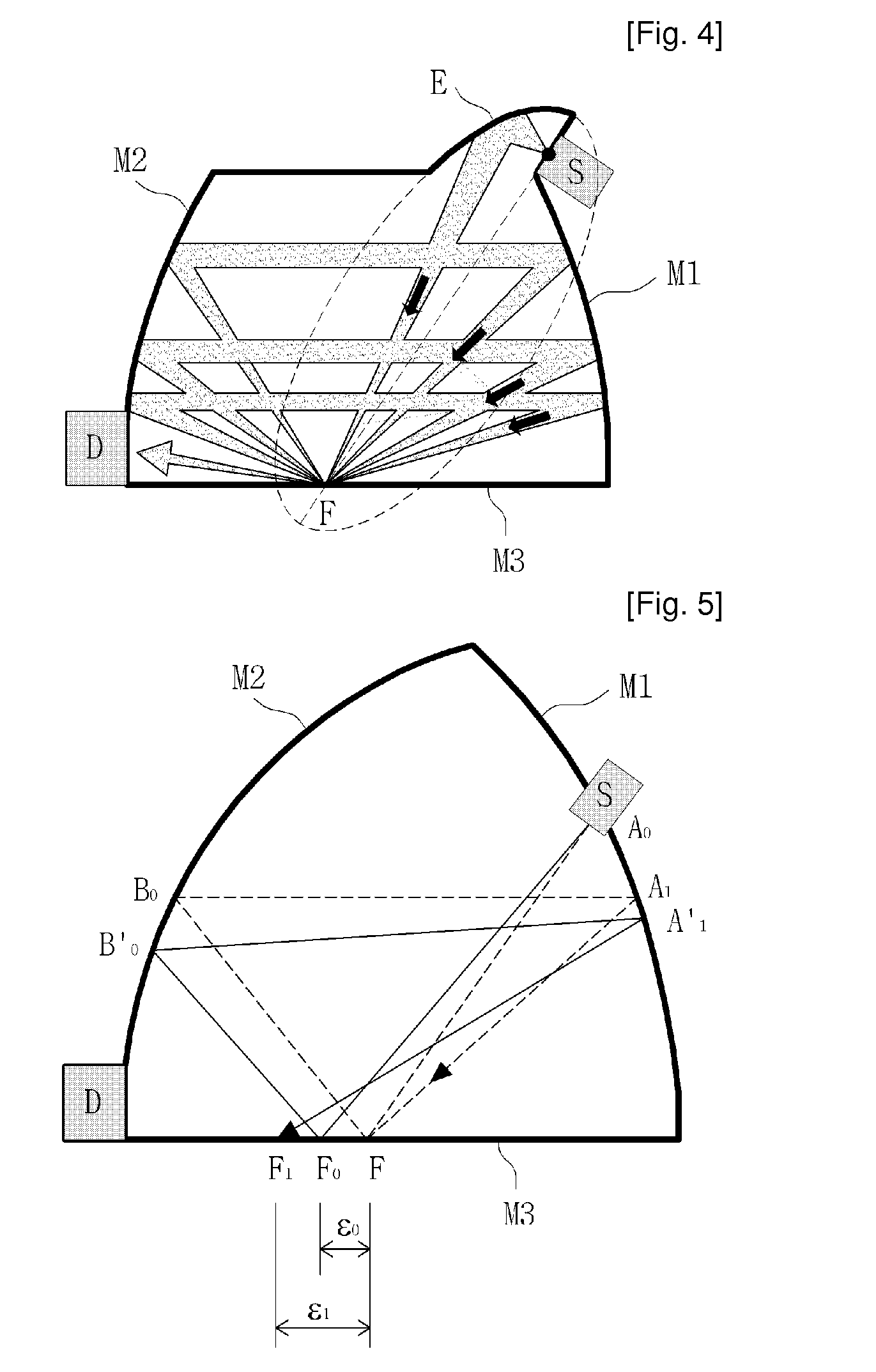Optical Cavity for Gas Sensor
a gas sensor and optical cavity technology, applied in the field of optical cavity for an infrared (ndir) gas sensor, can solve the problems of reducing the competitiveness of a product, increasing the volume of gas sensor and related manufacturing cost, and large deviation in the performance of each product, so as to reduce trial and error and cost, and easy to analyze
- Summary
- Abstract
- Description
- Claims
- Application Information
AI Technical Summary
Benefits of technology
Problems solved by technology
Method used
Image
Examples
Embodiment Construction
[0032]For the aforesaid object, the optical cavity according to one aspect of the present invention comprises two oppositely arranged parabolic mirrors having common focus located on the common optical axis of the parabolic mirrors; and a plane mirror arranged along the optical axis between the vertexes of each of the parabolic mirrors.
[0033]In the above-mentioned optical cavity, the light radiated from an arbitrary point on the parabolic mirror having longer focal distance circulates the inside of the optical cavity, goes along the optical axis to the positive and negative directions, and finally converges into the optical axis. Therefore, a light detector located in parallel to the optical axis can detect all the lights radiated from the light source.
[0034]In the above-mentioned optical cavity, light reflection occurs only at the focal point of the parabolic mirrors on the plane mirror. Since light reflection occurs only at the focal point located on the plane mirror the light doe...
PUM
| Property | Measurement | Unit |
|---|---|---|
| focal distance | aaaaa | aaaaa |
| angle of radiation | aaaaa | aaaaa |
| length | aaaaa | aaaaa |
Abstract
Description
Claims
Application Information
 Login to View More
Login to View More - R&D
- Intellectual Property
- Life Sciences
- Materials
- Tech Scout
- Unparalleled Data Quality
- Higher Quality Content
- 60% Fewer Hallucinations
Browse by: Latest US Patents, China's latest patents, Technical Efficacy Thesaurus, Application Domain, Technology Topic, Popular Technical Reports.
© 2025 PatSnap. All rights reserved.Legal|Privacy policy|Modern Slavery Act Transparency Statement|Sitemap|About US| Contact US: help@patsnap.com



